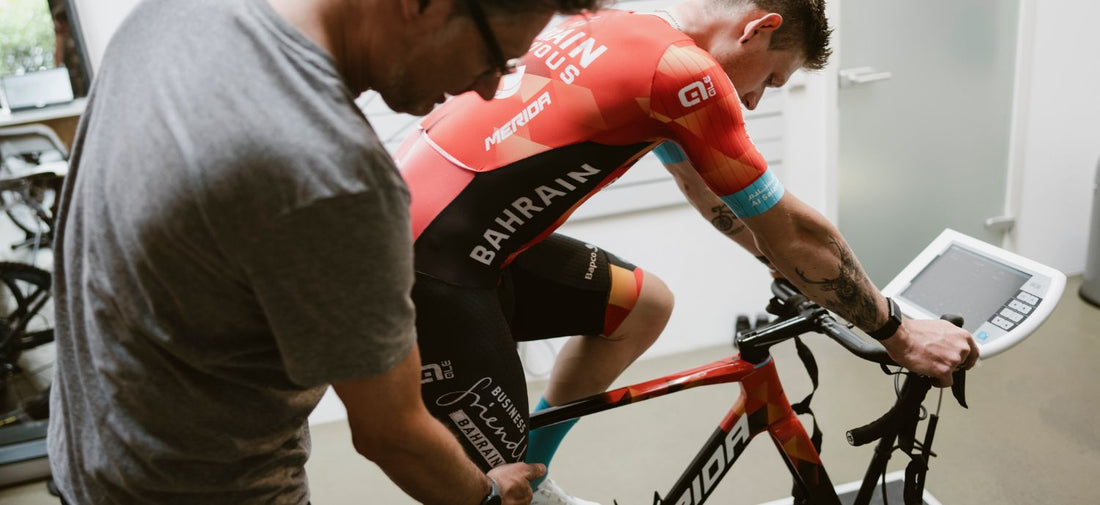
How to prevent pectineus muscle pain while cycling
Cycling is an excellent way to stay fit, but it can sometimes lead to discomfort, particularly in the pectineus muscle. This small but crucial muscle in the inner thigh can cause pain if not properly managed.
Why the pectineus hurts during rides
The pectineus muscle, located in the inner thigh, plays a significant role in hip flexion and adduction. During cycling, it’s constantly engaged, which can lead to discomfort if certain conditions aren’t addressed. Here’s why your pectineus might hurt during rides:
Overactivation from hip adduction while pedaling
The pectineus muscle is heavily involved in pulling the thigh toward the body’s midline, a movement called hip adduction. When pedaling, especially during intense efforts or long rides, the muscle can become overworked. This is particularly true if your pedaling technique emphasizes inward knee movement or if you’re riding in a narrow stance, which forces the pectineus to compensate excessively.
Poor saddle width or position
An improperly fitted saddle can contribute significantly to pectineus pain. A saddle that’s too narrow or positioned too high or low can put undue pressure on the inner thigh muscles, including the pectineus. This misalignment can cause the muscle to strain as it tries to stabilize your hips during each pedal stroke.
Muscle tightness and lack of flexibility
Tight hip muscles, including the pectineus, are a common issue for cyclists who neglect stretching or mobility work. Limited flexibility in the hip adductors can lead to muscle fatigue and soreness, especially during long rides. Tightness may also cause compensatory movements, further stressing the pectineus.

Main causes of pectineus strain in cyclists
While overactivation and poor saddle fit are major contributors, other factors can lead to pectineus strain. Addressing these root causes can help you ride comfortably and avoid injury.
Improper bike fit and narrow stance
A bike that doesn’t fit your body properly is a leading cause of pectineus strain. If your bike’s frame, saddle height, or pedal alignment forces your legs into a narrow stance, it places excessive stress on the inner thigh muscles. A narrow stance can also disrupt your pedaling mechanics, causing the pectineus to overcompensate during each stroke.
Getting a professional bike fit is essential to ensure your bike is tailored to your body’s dimensions and riding style.
Weak core and hip stabilizers
A weak core or underdeveloped hip stabilizer muscles can place extra strain on the pectineus. These muscles, including the glutes and obliques, help maintain proper pelvic alignment during cycling. When they’re weak, the pectineus may overcompensate to stabilize the hips, leading to fatigue and pain over time.
Imbalanced muscle load during long rides
Long rides can exacerbate muscle imbalances, especially if certain muscle groups are overworked. If your quadriceps or hamstrings dominate your pedaling motion, the pectineus may take on additional stress to maintain balance, leading to strain. This is particularly common in riders who push big gears or maintain a high cadence for extended periods without proper conditioning.
Quick tips to relieve groin pain mid-ride
If you experience pectineus or groin pain during a ride, quick adjustments can provide relief and help you finish your session comfortably. Here are some practical tips:
Adjust saddle to reduce inner thigh compression
If your saddle is too high or tilted improperly, it can compress the inner thigh muscles, including the pectineus. Mid-ride, try lowering the saddle slightly or adjusting its tilt to reduce pressure on the groin area. Even small changes can make a big difference in comfort.

Use a wider saddle or modify stance width
A saddle that’s too narrow can exacerbate pectineus pain by forcing your thighs into an unnatural position. If possible, switch to a wider saddle that matches your sit bone width. Alternatively, adjust your stance by slightly widening your pedal stroke or repositioning your cleats to allow a more natural leg alignment.
How insoles can help relieve pectineus muscle pain?
Insoles, can indirectly help with pectineus muscle pain by addressing biomechanical issues that contribute to strain or overwork in the hip and groin area. If poor foot mechanics or flat feet cause the leg to twist or become unstable, this can put extra stress on the adductor muscles, including the pectineus, and potentially lead to pain.
Insoles can help correct these imbalances, reducing stress on the groin and improving the overall alignment of the lower body.
Insoles can provide support for arches, reduce overpronation (flat feet), or address high arches. These issues can lead to improper alignment of the legs and hips, which can strain the adductor muscles.

Conclusion
Pectineus muscle pain doesn’t have to derail your cycling routine. By addressing improper bike fit, refining your pedaling technique, strengthening supporting muscles, and incorporating flexibility exercises, you can prevent discomfort and enjoy longer, pain-free rides. If pain persists, consult a physical therapist or sports medicine specialist to rule out underlying issues. Keep these tips in mind, and you’ll be pedaling smoothly in no time!
If you have questions, you can contact us at: info@solestar.com

